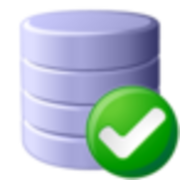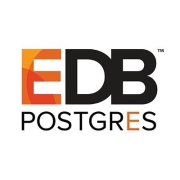DBaaS offers scalable database management hosted in the cloud, eliminating the need for physical infrastructure. It is tailored for efficient data handling, providing flexibility and cost-effectiveness for businesses seeking streamlined data operations.
Database as a Service provides organizations with managed database solutions, effectively reducing the complexity associated with traditional database management. Companies opting for DBaaS benefit from its scalability, automated backups, and high availability. It supports multiple database types and allows integration across various platforms, enabling businesses to focus on data utilization rather than infrastructure difficulties. Customers benefit from security measures integrated into the platforms, enhancing data protection and compliance with industry regulations.
What are critical features of Database as a Service?In finance, DBaaS supports large-scale data transactions with enhanced security, whereas in healthcare, it facilitates patient data management compliance. E-commerce platforms utilize it for real-time analytics and personalized customer solutions, enhancing user experience.
DBaaS assists organizations in simplifying database management, enabling them to focus on core business objectives by managing data efficiently, eliminating the need for in-house database expertise, and improving adaptability to technological advancements.
| Product | Market Share (%) |
|---|---|
| Amazon RDS | 19.1% |
| MongoDB Atlas | 14.0% |
| Microsoft Azure SQL Database | 13.0% |
| Other | 53.9% |































DBaaS solutions offer several advantages including scalability, flexibility, and cost-efficiency. You can easily scale resources according to demand without the need for upfront investments in hardware. DBaaS also provides automated backups and security features to ensure your data remains protected. These services allow you to focus more on application development and less on database management.
How secure is DBaaS compared to traditional databases?DBaaS providers implement robust security measures to protect data from unauthorized access. These measures include encryption, multi-factor authentication, and regular security updates. You also benefit from shared responsibility models where the provider ensures the infrastructure's security while you focus on securing the data you store. Reviewing the specific compliance and security features of your chosen provider can give you confidence in using DBaaS solutions.
Can DBaaS support high-demand enterprise applications?Yes, DBaaS supports high-demand enterprise applications by providing scalability and performance solutions. With DBaaS, you get high availability, automatic failover, and distributed database systems designed to handle large amounts of data and transactions. Service Level Agreements (SLAs) also ensure high uptime, making it suitable for enterprise use. It's crucial to choose a provider that aligns with your specific performance and scalability requirements.
What are some common challenges when migrating to DBaaS?Migrating to DBaaS can present challenges such as data transfer complexities, application redesign requirements, and potential vendor lock-in. Successful migration often requires thorough planning, including assessing data compatibility and migration tools offered by the provider. It's important to understand your application's architecture to ensure a smooth transition. Developing a clear migration strategy can mitigate many of these issues.
How does DBaaS impact DevOps practices?DBaaS significantly enhances DevOps practices by streamlining database management and accelerating development cycles. With DBaaS, you can provision databases quickly, automate deployment processes, and enjoy reliable testing environments. This supports continuous integration and continuous deployment (CI/CD) pipelines, reducing the time and effort needed for infrastructure management while improving development agility.